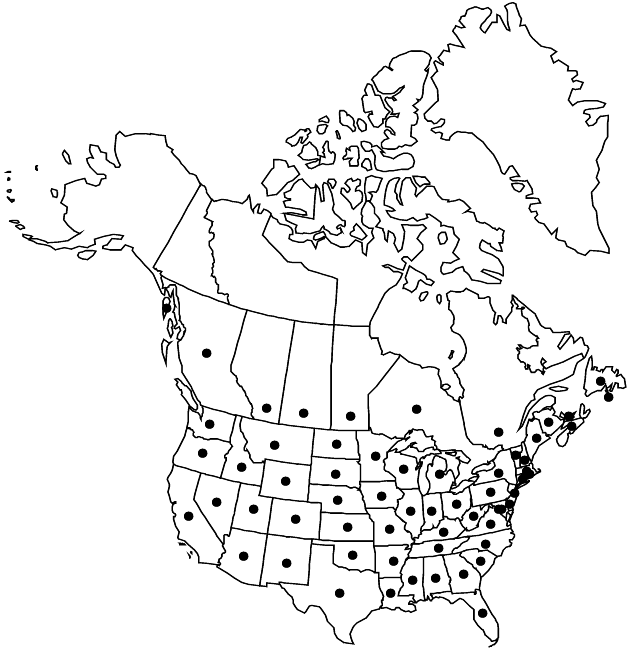Cirsium vulgare
Fl. Napol. 5: 209. 1835.
Biennials, 30–200(–300) cm; taproots. Stems 1–many, erect or ascending, branches few–many, ascending, villous with septate trichomes. Leaves: blades oblong-lanceolate to obovate, 15–40 × 6–15 cm, margins plane or revolute, coarsely 1–2-pinnatifid with rigidly divergent lobes, sometimes merely spinose-dentate, lobes triangular to lanceolate, entire to spiny-dentate, main spines 2–10 mm, abaxial faces gray-tomentose, villous with septate trichomes along veins, adaxial green, covered with short appressed bristlelike spines, sometimes tomentose when young; basal present or absent at flowering, petioles winged, bases tapered; principal cauline winged-petiolate, mid and distal becoming sessile, well distributed or not, progressively reduced distally, at least distal decurrent as long spiny wings; distal cauline often more deeply lobed than proximal, main lobes rigidly spiny, margins spinulose, otherwise entire. Heads few–many in corymbiform or paniculiform arrays. Peduncles 1–6 cm. Involucres hemispheric to campanulate, 3–4 × 2–4 cm, loosely arachnoid-tomentose. Phyllaries in 10–12 series, strongly imbricate, linear-lanceolate (outer) to linear (inner), outer and middle appressed, (bases stramineous), margins entire, abaxial faces without glutinous ridge, apices radiating, greenish, spines 2–5 mm; apices of inner phyllaries flat, serrulate to minutely erose. Corollas purple (rarely white), 25–35 mm, tubes 18–25 mm, throats 5–6 mm, lobes 5–7 mm; style tips 3.5–6 mm. Cypselae light brown with darker streaks, 3–4.5 mm, apical collar not differentiated; pappi 20–30 mm. 2n = 68.
Phenology: Flowering mostly summer (Jun–Sep), year round in areas with mild climates.
Habitat: Invasive weed of disturbed sites, pastures, meadows, forest openings, roadsides
Elevation: 0–2200 m
Distribution

Introduced; St. Pierre and Miquelon, Alta., B.C., Man., N.B., Nfld. and Labr. (Nfld.), N.S., Ont., P.E.I., Que., Sask., Ala., Alaska, Ariz., Ark., Calif., Colo., Conn., Del., D.C., Fla., Ga., Idaho, Ill., Ind., Iowa, Kans., Ky., La., Maine, Md., Mass., Mich., Minn., Miss., Mo., Mont., Nebr., Nev., N.H., N.J., N.Mex., N.Y., N.C., N.Dak., Ohio, Okla., Oreg., Pa., R.I., S.C., S.Dak., Tenn., Tex., Utah, Vt., Va., Wash., W.Va., Wis., Wyo., Eurasia.
Discussion
Native to Eurasia, Cirsium vulgare is the only thistle in North America with bristlelike spines borne on the adaxial leaf faces. These structures are variously described in the literature as trichomes (“spreading hirsute,” “scabrous-hispid,” “coarsely hispid,” “rigid, rather pungent setae,” “prickly-hairy”), prickles, or spines (“setose-spinulose,” “appressed and dense spines”). My examination of cleared leaves of C. vulgare indicated that these structures are not epidermal outgrowths (trichomes or prickles) but emerge from fine veinlets within the tissues of the leaf. As such, they are properly treated as spines.
Bull thistle is a noxious weed that has invaded disturbed habitats across the continent. Distasteful to livestock, it can increase in heavily grazed pastures. It occurs in a wide variety of habitats.
Selected References
None.